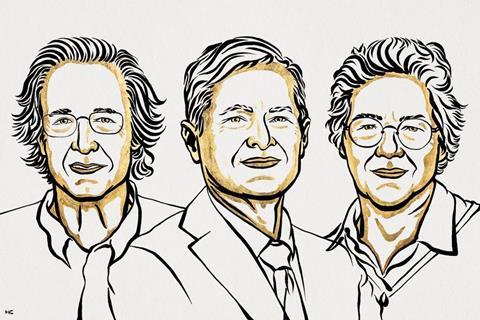
The 2023 Nobel prize in physics has been awarded to Pierre Agostini, Ferenc Krausz and Anne L’Huillier for their work on techniques that enable scientists to track the movement of electrons on ultrafast timescales. The Nobel committee that picked the winners cited the trio’s work on ‘experimental methods that generate attosecond pulses of light for the study of electron dynamics in matter’.
Announcing the award, Eva Olsson who chairs the Nobel committee for physics, noted that the techniques ‘open the door to the world of electrons’. ‘Attosecond physics gives us the opportunity to understand mechanisms that are governed by electrons,’ she added. ‘The next step will be utilising them.’
It is not the first time that work on ultrafast science has been recognised with a Nobel prize. In 1999 the Egyptian researcher Ahmed Zewail won the Nobel prize in chemistry for his studies using femtosecond (fs) spectroscopy to probe events that occur in a thousand trillionths of a second. This work enabled scientists to track chemistry on timescales relevant to atomic motion. But tracking electron motion requires even shorter pulses of light – as the Nobel committee explains ‘breaking the 1fs barrier required a paradigm shift based on fundamental physics’.
“Even now 30 years afterwards we are still learning new things.”
— The Nobel Prize (@NobelPrize) October 3, 2023
Our new physics laureate Anne L'Huillier tells us how much the #NobelPrize means to her, and how her research field continues to fascinate her, even today.
Listen to our interview with her: pic.twitter.com/DZQEVDGd0s
An attosecond is one quintillionth of a second (10-18s). To try and put these unimaginably small timescales in context – if a single second was equivalent to 15 billion years (around about the age of the universe), then one attosecond would last less than half a second.
In the 1980s, L’Huillier led theoretical work at Paris-Saclay University in France that provided new understanding of the harmonic emissions produced when atoms in a noble gas were excited with an infrared laser. Over her career, L’Huillier, who is now based at Lund University in Sweden, continued to explore the phenomenon, laying the groundwork for using high-harmonic generation to produce attosecond light pulses.
In 2001, Agostini and Krausz both successfully produced light pulses that broke the femtosecond barrier. Agostini’s breakthrough also came when he was working at Paris-Saclay, when his team used high-harmonic generation to produce a series of consecutive light pulses, each lasting just 250 attoseconds. Meanwhile, while he was working at the Vienna University of Technology, Krausz’s team developed an experiment that could produce x-ray pulses lasting just 650 attoseconds.
2023 physics laureate Ferenc Krausz was preparing for a morning of giving lab tours at his institute when he received a phone call from Sweden – he had been awarded the physics prize. We spoke to him just after he found out the news – listen to his first reaction: pic.twitter.com/Jc8sDpv3pT
— The Nobel Prize (@NobelPrize) October 3, 2023
Both have continued to work on attosecond science, with Agostini now based at the Ohio State University in Columbus, US, and Krausz at the Max Planck Institute of Quantum Optics in Munich, Germany.
Beyond the fundamental understanding that can be gained using attosecond experiments, these techniques have many real-world applications. For example, better understanding of how electrons behave in different materials can help inform the design of new electronic devices. The experiments can also be used in biomedical applications, with Krausz’s team showing last year how attosecond pulses can be used to detect changes in the molecular makeup of biological fluids such as blood plasma, suggesting potential future uses in medical diagnostics.
Chemistry World will be following all the news and views as the chemistry Nobel prize is announced tomorrow, so join us from 8am BST onwards.






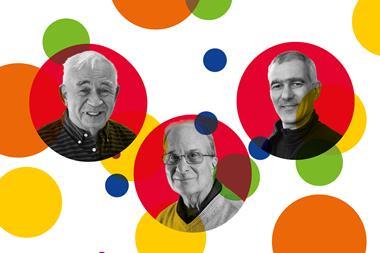
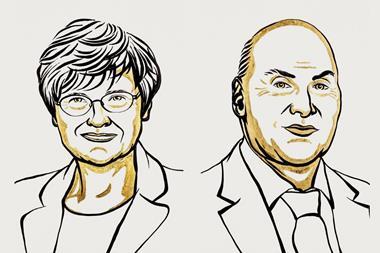
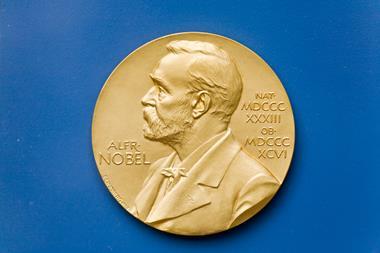
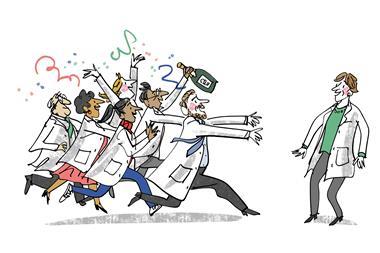







No comments yet